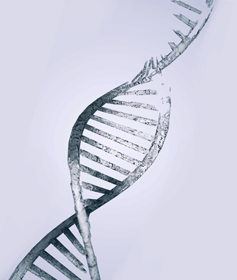New Research Reveals Alcohol’s Destructive Power

Anyone who has ever drunk too much knows that alcohol has the power to make us feel lousy the next morning. The headache, the nausea and the fatigue are clear messages that we’ve overdone it the night before. But now, new research tells us that there’s much more damage happening than just this hangover. A new study from Cambridge University reveals the power that alcohol has to shred the DNA buried deep in our cells.

Here’s what happens: When you drink, your body begins to break alcohol down into components called metabolites. One of these metabolites is acetaldehyde, a substance that is toxic to the body. If you’re not overloaded with alcohol, you can quickly break down the acetaldehyde into less harmful chemicals and then eliminate them. But if there is too much alcohol for the body to handle easily, acetaldehyde builds up inside your cells. This is the chemical that is so damaging to your DNA.
In tests using mice, the researchers found that a buildup of acetaldehyde caused breaks in the DNA in blood stem cells. (Stem cells have the ability to produce specialized cells to repair worn out tissues in organs, joints or other parts of the body.) The DNA in these cells was permanently altered—meaning they could not reproduce into healthy cells. And when healthy cells become damaged, they can then permit the growth of cancerous cells.
Alcohol Was Already a Known Carcinogen
It’s not news that excessive alcohol consumption can cause cancer. This study begins to provide an explanation why it can cause certain cancers through DNA damage.
The National Institutes of Health has already noted the clear relationship between alcohol consumption and the following types of cancer:
- Head and neck cancers including mouth, throat, and larynx. The risk of these cancers is even greater among people who both drink and smoke.
- Esophageal cancer.
- Liver cancer. Alcohol consumption is a primary cause of this type of cancer. It’s estimated that 30,000 Americans will die from this type of cancer in 2018.
- Breast cancer. The more alcohol consumed, the greater the risk.
- Colorectal cancer (cancer of the colon or rectum). Again, the risk increased along with the quantity of alcohol consumed.
Is Your Face Red after Drinking?

The flushing that some people experience after drinking is actually related to that metabolite acetaldehyde. Some people are genetically less capable of breaking down and eliminating acetaldehyde, so when they drink, this chemical builds up in their bodies, producing unpleasant symptoms such as flushing or heart palpitations.
If a person with this reduced ability to process acetaldehyde continues to drink excessively, he or she runs a higher risk of head, neck and esophageal cancers.
The safest way to stay healthy is to skip the alcohol. If you’re going to drink, limit your drinking to small amounts and space your drinks out to permit your body to process the toxicity. If you notice symptoms such as flushing or palpitations, you’d be very wise to choose zero alcohol consumption.
For a person who can’t quit drinking on their own, Narconon can help. For more than fifty years, the Narconon drug rehab program has been helping the addicted return to healthier, sober lives. Call us to learn more: (800) 737-5250.


 ®
®